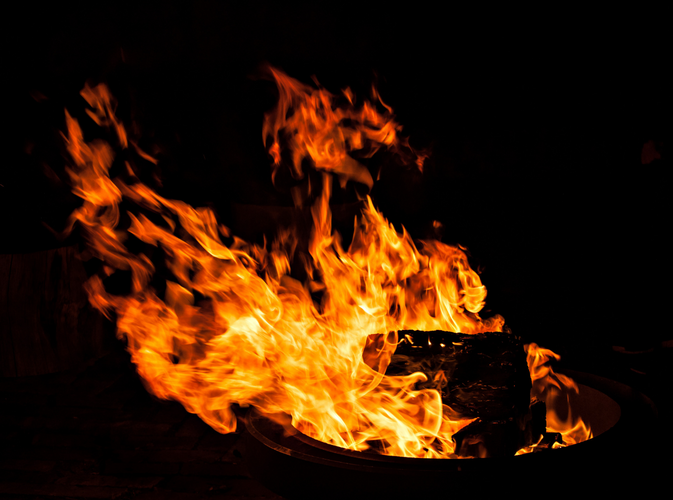Sep 23rd 2019
Do’s and Don’ts of Fire Pit Safety
Not surprisingly, firepits are the top requested addition to bring ambiance to a home or commercial property. With unique designs that give a stunning upscale display, whether indoor or outdoor, our fire pits combine character and craftsmanship to enhance your property. We want to ensure you are equipped with quality safety techniques to properly utilize your Fire Pit Art® piece. Here you will find a comprehensive list of do’s and don’ts when using fire pits.
DO’s
- Use the right wood: Burning softwoods, such as cedar, can assist in repelling unwanted insects. Burning hardwoods such as oak or hickory, tend to spark less than softer woods. Plywood, composite wood, and other construction materials should not be used as they can release toxic fumes when burning.
- Use a spark guard: At Fire Pit Art® we hand craft quality grade spark guards to help protect from flying sparks or embers, and help contain your fire inside the pit, where it belongs. Our spark guards are created with high temperate paint and are custom made to fit our fire pit designs.
- Check the weather report: Windy weather can cause embers to blow and be a cause of potential fire hazards in surrounding areas. Cleaning up leaves and other easily flammable materials around the fire pit can also aide in keeping embers from jumping and spreading unwanted fires outside of your fire pit. Check for burn bans on the local weather channel. Some weather conditions, including high air pollutants, can cause a “no burn policy” for a time being when air quality is poor.
DON’Ts
- Use fuel accelerants: Using fuel accelerants such as gasoline or kerosene can be dangerous. These chemicals can release toxins in the air around the fire pit, as well as ignite a fire that can quickly get out of control. Use dry wood to start a fire safely.
- Leave fire burning unattended: Like any fire, a fire pit fire still requires tending to. Be sure to keep a watchful eye on your fire pit and tend to it as needed. Stoking the fire, keeping children from the open flames, and safely extinguishing a fire to ensure it doesn’t not burn overnight are all safe practices.
- Use a straight stream of water: If you need to extinguish a flare always use a showered stream of water. If using a garden hose do not allow the water to be aimed at the fire as a stream, as this can contribute to the spread of burning embers. Another option to extinguish a fire without letting it burn out itself, is the use of sand. Dumping sand will quickly eliminate flames. Stirring the embers with a fire pit tool is best practice to help ensure the embers are cool and safe to leave unattended without the fear of reignition
Adhering to basic fire pit safety tips can prevent unmanageable fires, or accidental injuries. Informing your homeowners insurance company of a fire pit, particularly a fire pit that increases a home’s value, can help save you from costs should you need repairs or replacements should it be damaged by an approved/covered peril. Not all companies will grant this coverage, check with your agent to discuss your options.
At Fire Pit Art® we believe a fire pit brings loved ones together, is a statement for any business or commercial property, and can give character to any location. Utilizing proper safety techniques, you can relax by your Fire Pit Art masterpiece with peace of mind.

